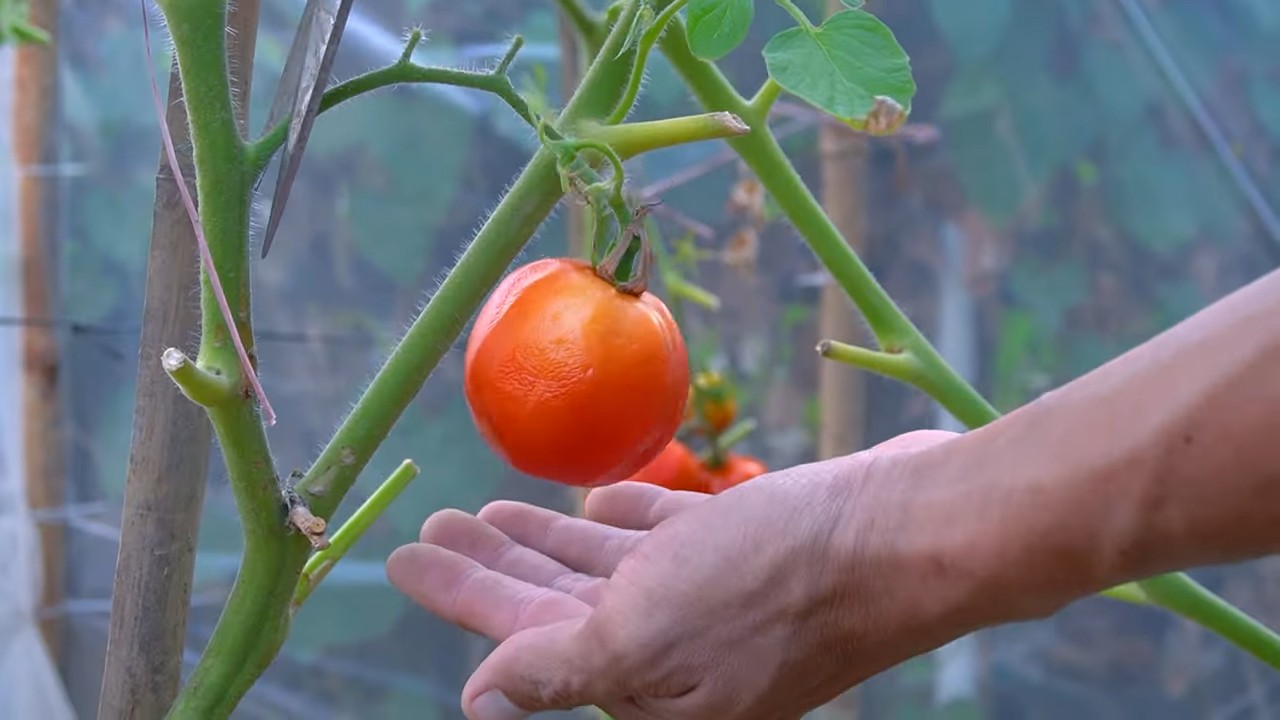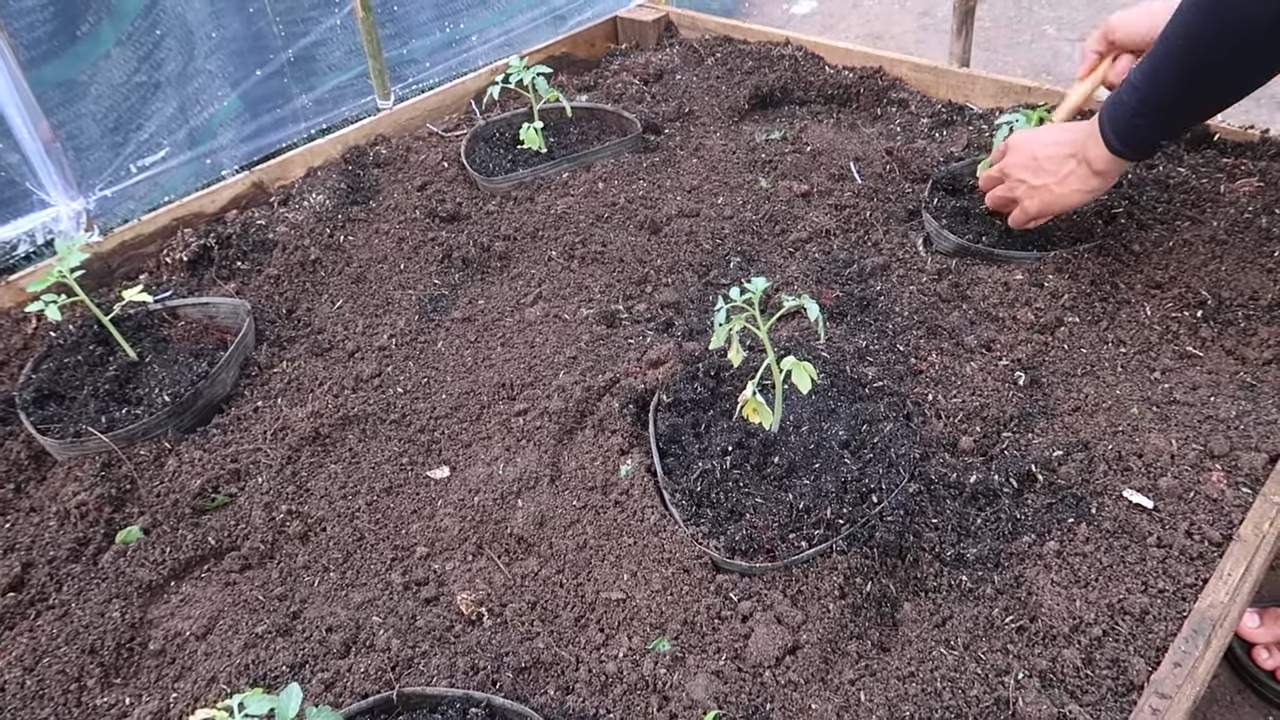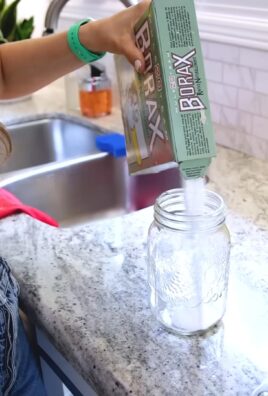Grow Long Beans at Home and unlock the secrets to a bountiful harvest right in your backyard! Imagine stepping outside and picking fresh, vibrant long beans for your dinner – a truly rewarding experience. For centuries, cultivating beans has been a cornerstone of diverse cultures, providing essential nutrients and connecting people to the land. From ancient civilizations to modern-day gardens, the humble bean has nourished communities and inspired culinary traditions.
But let’s face it, sometimes gardening can feel a little daunting. Maybe you’ve tried growing long beans before with limited success, or perhaps you’re a complete beginner unsure where to start. That’s where these DIY tricks and hacks come in! I’m going to share simple, effective strategies to help you grow long beans at home successfully, even if you have limited space or experience.
Why do you need these DIY tricks? Because store-bought vegetables simply can’t compare to the taste and satisfaction of homegrown produce. Plus, you’ll know exactly what’s going into your food – no harmful pesticides or hidden chemicals. Get ready to transform your garden (or even your balcony!) into a thriving long bean paradise. Let’s get started!

Lange Bohnen zu Hause anbauen: Dein DIY-Leitfaden für eine reiche Ernte
Hey Gärtnerfreunde! Lange Bohnen, auch bekannt als Spargelbohnen oder Yardlong Beans, sind nicht nur super lecker, sondern auch ein echter Hingucker im Garten. Sie wachsen schnell, sind relativ pflegeleicht und liefern eine beeindruckende Ernte. Ich zeige dir, wie du diese faszinierenden Pflanzen ganz einfach zu Hause anbauen kannst. Los geht’s!
Was du brauchst: Die Vorbereitung
Bevor wir loslegen, brauchen wir natürlich das richtige Equipment und die passenden Materialien. Hier ist eine Liste, damit du alles griffbereit hast:
* Samen: Wähle hochwertige Samen von Langen Bohnen. Achte auf Sorten, die für dein Klima geeignet sind. Es gibt verschiedene Sorten mit unterschiedlichen Farben und Geschmacksrichtungen.
* Anzuchttöpfe oder -schalen: Für die Voranzucht im Haus.
* Anzuchterde: Spezielle Erde für die Anzucht, die nährstoffarm und locker ist.
* Gartenerde: Gute, nährstoffreiche Gartenerde für das Beet oder den Topf.
* Kompost oder organischer Dünger: Um den Boden anzureichern.
* Pflanzstäbe oder Rankgitter: Lange Bohnen sind Kletterpflanzen und brauchen Unterstützung.
* Gießkanne oder Schlauch: Zum Bewässern.
* Gartenschere: Zum Beschneiden und Ernten.
* Handschuhe: Um deine Hände sauber zu halten.
* Spaten oder Schaufel: Zum Umgraben und Pflanzen.
* Etiketten und Stift: Zum Beschriften der Pflanzen.
Die Aussaat: Der Start in die lange Bohnen-Saison
Es gibt zwei Möglichkeiten, Lange Bohnen anzubauen: direkt ins Beet säen oder vorziehen. Ich bevorzuge die Voranzucht, da sie den Pflanzen einen Vorsprung verschafft und sie vor Schnecken schützt.
Voranzucht im Haus (empfohlen)
1. Vorbereitung der Anzuchttöpfe: Fülle die Anzuchttöpfe oder -schalen mit Anzuchterde. Drücke die Erde leicht an.
2. Aussaat der Samen: Lege in jeden Topf 2-3 Samen, etwa 2-3 cm tief. Bedecke die Samen mit Erde und gieße sie vorsichtig an.
3. Standort: Stelle die Töpfe an einen warmen, hellen Ort. Eine Fensterbank oder ein Gewächshaus sind ideal. Die ideale Keimtemperatur liegt zwischen 20 und 25 Grad Celsius.
4. Feuchtigkeit: Halte die Erde feucht, aber nicht nass. Vermeide Staunässe, da dies zu Fäulnis führen kann.
5. Keimung: Die Samen keimen in der Regel innerhalb von 7-14 Tagen.
6. Pikieren: Sobald die Sämlinge 2-3 echte Blätter haben, kannst du sie pikieren. Das bedeutet, dass du die stärksten Sämlinge in größere Töpfe umpflanzt, um ihnen mehr Platz zum Wachsen zu geben.
Direktsaat ins Beet
1. Bodenvorbereitung: Lockere den Boden im Beet gründlich auf und entferne Unkraut. Arbeite Kompost oder organischen Dünger ein, um den Boden anzureichern.
2. Aussaat: Säe die Samen direkt ins Beet, etwa 2-3 cm tief. Halte einen Abstand von etwa 10-15 cm zwischen den Samen und 60-80 cm zwischen den Reihen ein.
3. Gießen: Gieße die Samen nach der Aussaat vorsichtig an.
4. Schutz: Schütze die jungen Pflanzen vor Schnecken und anderen Schädlingen.
Das Auspflanzen: Ab ins Freie!
Sobald die Gefahr von Nachtfrösten vorüber ist (in der Regel Mitte Mai), können die vorgezogenen Pflanzen ins Freie umgepflanzt werden.
1. Vorbereitung des Beets: Lockere den Boden erneut auf und entferne Unkraut.
2. Pflanzlöcher: Grabe Pflanzlöcher, die etwas größer sind als die Wurzelballen der Pflanzen.
3. Pflanzen: Setze die Pflanzen vorsichtig in die Pflanzlöcher und fülle sie mit Erde auf. Drücke die Erde leicht an.
4. Gießen: Gieße die Pflanzen nach dem Pflanzen gründlich an.
5. Rankhilfe: Installiere Pflanzstäbe oder Rankgitter, an denen die Pflanzen hochklettern können. Lange Bohnen können bis zu 3 Meter hoch werden, also sorge für ausreichend hohe Rankhilfen.
Die Pflege: Damit deine Langen Bohnen prächtig gedeihen
Lange Bohnen sind relativ pflegeleicht, aber ein paar Dinge solltest du beachten, um eine reiche Ernte zu erzielen.
* Bewässerung: Gieße die Pflanzen regelmäßig, besonders während trockener Perioden. Achte darauf, dass der Boden immer leicht feucht ist.
* Düngung: Dünge die Pflanzen alle 2-3 Wochen mit einem organischen Dünger oder Komposttee.
* Unkrautbekämpfung: Entferne regelmäßig Unkraut, um die Pflanzen vor Konkurrenz zu schützen.
* Beschneiden: Du kannst die Pflanzen beschneiden, um das Wachstum zu fördern und die Ernte zu erleichtern. Schneide Seitentriebe ab, die zu dicht wachsen.
* Schädlingsbekämpfung: Achte auf Schädlinge wie Blattläuse oder Bohnenkäfer. Bekämpfe sie bei Bedarf mit natürlichen Mitteln wie Brennnesseljauche oder Neemöl.
Die Ernte: Der Lohn deiner Mühe
Die Erntezeit beginnt in der Regel etwa 2-3 Monate nach der Aussaat.
1. Erntezeitpunkt: Ernte die Bohnen, wenn sie noch jung und zart sind. Sie sollten etwa bleistiftdick sein und sich leicht biegen lassen.
2. Erntetechnik: Schneide die Bohnen mit einer Gartenschere ab. Ziehe nicht an den Pflanzen, da du sie sonst beschädigen könntest.
3. Regelmäßige Ernte: Ernte die Bohnen regelmäßig, um die Produktion neuer Blüten und Früchte anzuregen.
4. Lagerung: Lange Bohnen sind nicht lange haltbar. Du kannst sie im Kühlschrank für ein paar Tage aufbewahren oder einfrieren.
Zusätzliche Tipps und Tricks für eine erfolgreiche Ernte
* Fruchtfolge: Wechsle den Standort der Langen Bohnen jedes Jahr, um Krankheiten und Schädlingen vorzubeugen.
* Mischkultur: Pflanze Lange Bohnen zusammen mit anderen Pflanzen, die sich gegenseitig unterstützen. Gute Nachbarn sind zum Beispiel Karotten, Gurken oder Salat.
* Mulchen: Bedecke den Boden um die Pflanzen mit Mulch, um die Feuchtigkeit zu halten und Unkrautwachstum zu reduzieren.
* Sonnenschutz: In sehr heißen Regionen kann es sinnvoll sein, die Pflanzen während der Mittagszeit zu beschatten.
* Sortenwahl: Experimentiere mit verschiedenen Sorten von Langen Bohnen, um herauszufinden, welche am besten in deinem Garten gedeihen und dir am besten schmecken.
Häufige Probleme und Lösungen
* Schnecken: Schütze die jungen Pflanzen mit Schneckenkorn oder Schneckenzäunen.
* Blattläuse: Spritze die Pflanzen mit Brennnesseljauche oder Neemöl.
* Bohnenkäfer: Sammle die Käfer ab oder verwende biologische Insektizide.
* Pilzkrankheiten: Sorge für eine gute Belüftung der Pflanzen und vermeide Staunässe.
Fazit: Dein eigener langer Bohnen-Erfolg
Mit diesen Tipps und Tricks steht deiner eigenen langen Bohnen-Ernte nichts mehr im Wege. Es ist ein lohnendes Projekt, das nicht nur leckere Bohnen liefert, sondern auch deinen Garten verschönert. Viel Spaß beim Gärtnern! Und denk dran: Geduld und Pflege sind der Schlüssel zum Erfolg. Ich bin sicher, du wirst bald stolz deine eigenen, selbstgezogenen Langen Bohnen ernten können!

Conclusion
So, there you have it! Growing long beans at home is not only achievable, but it’s also a deeply rewarding experience. Forget those bland, overpriced beans from the supermarket. Imagine stepping into your own backyard and harvesting vibrant, crisp, and flavorful long beans whenever you desire. This DIY trick transforms your garden into a source of fresh, organic produce, saving you money and reducing your carbon footprint.
But why is this a must-try? Beyond the obvious benefits of fresh, homegrown vegetables, cultivating long beans offers a unique connection to nature. You’ll witness the entire life cycle of the plant, from tiny seed to sprawling vine laden with delicious beans. It’s a fantastic educational opportunity for children and a therapeutic activity for adults. Plus, the satisfaction of serving a meal made with ingredients you nurtured yourself is simply unparalleled.
Consider these variations to personalize your long bean growing journey. Experiment with different varieties of long beans, such as the classic yardlong bean, the vibrant purple long bean, or the stringless asparagus bean. Each offers a unique flavor profile and visual appeal. You can also explore different trellising methods. While a simple bamboo structure works wonders, you might opt for a more elaborate archway or even train your long beans along a fence. For those with limited space, try growing long beans in large containers on a balcony or patio. Just ensure they receive ample sunlight and support.
Don’t be intimidated if you’re a beginner gardener. Growing long beans at home is surprisingly straightforward, and the rewards far outweigh the effort. With a little planning, preparation, and consistent care, you’ll be harvesting a bountiful crop in no time.
We wholeheartedly encourage you to give this DIY trick a try. Embrace the joy of homegrown produce and discover the satisfaction of nurturing your own long bean plants. Once you’ve experienced the taste of freshly picked long beans, you’ll never go back to store-bought ones again.
And most importantly, we want to hear about your experiences! Share your photos, tips, and challenges in the comments below. Let’s create a community of long bean enthusiasts and learn from each other’s successes. Your insights could inspire others to embark on their own gardening adventures. So, grab your seeds, prepare your soil, and get ready to grow some amazing long beans! Happy gardening!
Frequently Asked Questions (FAQ)
What are the best conditions for growing long beans?
Long beans thrive in warm climates with plenty of sunshine. They require at least 6-8 hours of direct sunlight per day. The ideal soil is well-draining, fertile, and slightly acidic to neutral (pH 6.0-7.0). Consistent watering is crucial, especially during hot and dry periods. Providing a sturdy trellis or support structure is essential as the vines can grow quite long.
How long does it take for long beans to grow?
From planting to harvest, long beans typically take around 60-90 days. The exact timeframe depends on the variety, climate, and growing conditions. You can expect to start harvesting beans about 2-3 months after planting the seeds. Regular harvesting encourages continued production.
What are some common problems when growing long beans, and how can I prevent them?
Several pests and diseases can affect long beans. Aphids, bean beetles, and spider mites are common pests that can be controlled with insecticidal soap or neem oil. Fungal diseases like powdery mildew and rust can be prevented by ensuring good air circulation, avoiding overhead watering, and using disease-resistant varieties. Proper soil drainage is also crucial to prevent root rot. Regularly inspect your plants for any signs of problems and address them promptly.
Can I grow long beans in containers?
Yes, you can successfully grow long beans in containers, making it a great option for those with limited garden space. Choose a large container (at least 12 inches in diameter and depth) with good drainage holes. Use a high-quality potting mix and provide a trellis or support structure for the vines to climb. Ensure the container receives ample sunlight and water regularly. Container-grown long beans may require more frequent fertilization than those grown in the ground.
How often should I water long beans?
Long beans need consistent watering, especially during hot weather. Water deeply whenever the top inch of soil feels dry to the touch. Avoid overhead watering, as it can promote fungal diseases. Mulching around the base of the plants can help retain moisture and suppress weeds.
What kind of fertilizer should I use for long beans?
Long beans benefit from regular fertilization. Use a balanced fertilizer (e.g., 10-10-10) at planting time and then side-dress with a nitrogen-rich fertilizer every few weeks during the growing season. You can also use organic fertilizers like compost tea or fish emulsion. Avoid over-fertilizing, as it can lead to excessive foliage growth at the expense of bean production.
How do I know when long beans are ready to harvest?
Long beans are typically ready to harvest when they are about 12-18 inches long and still tender. The beans should be firm and snap easily when bent. Avoid letting the beans become too mature, as they will become tough and stringy. Harvest regularly to encourage continued production.
Can I save seeds from my long beans for next year?
Yes, you can save seeds from your long beans. Allow a few beans to mature fully on the vine until they are dry and brown. Remove the seeds from the pods and store them in a cool, dry place in an airtight container. Be aware that if you grew hybrid varieties, the seeds may not produce plants that are true to type.
Are long beans nutritious?
Yes, long beans are a nutritious vegetable. They are a good source of vitamins A and C, as well as fiber, folate, and manganese. They are also low in calories and fat.
What are some ways to cook long beans?
Long beans can be cooked in a variety of ways. They can be steamed, stir-fried, boiled, grilled, or added to soups and stews. They are often used in Asian cuisine and pair well with garlic, ginger, soy sauce, and sesame oil.
My long bean plants are flowering, but not producing beans. What could be the problem?
Several factors can contribute to poor bean production. Insufficient pollination, extreme temperatures, lack of nutrients, or pest infestations can all affect fruit set. Ensure your plants are receiving adequate sunlight, water, and fertilizer. You can also try hand-pollinating the flowers by gently transferring pollen from one flower to another using a small brush.
How do I deal with pests on my long bean plants organically?
Organic pest control methods are effective and safe for your garden. Insecticidal soap is great for aphids and spider mites. Neem oil is a broad-spectrum insecticide and fungicide. Companion planting with herbs like basil and marigolds can also deter pests. Regularly inspect your plants and remove any pests by hand.
What is the best time of year to plant long beans?
The best time to plant long beans is after the last frost in spring, when the soil has warmed up to at least 60°F (15°C). In warmer climates, you can plant long beans multiple times throughout the growing season.
Can I grow long beans indoors?
While it’s possible to grow long beans indoors, it can be challenging. They require a lot of sunlight, so you’ll need to provide supplemental lighting. You’ll also need a large container and a sturdy trellis. Indoor-grown long beans may not produce as many beans as those grown outdoors.




Leave a Comment